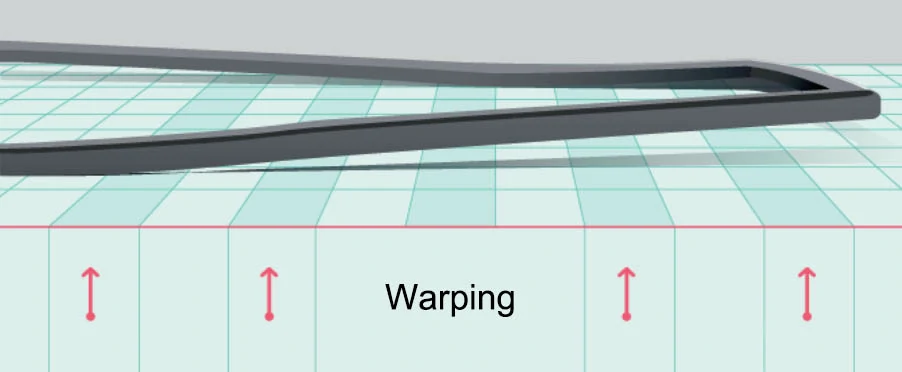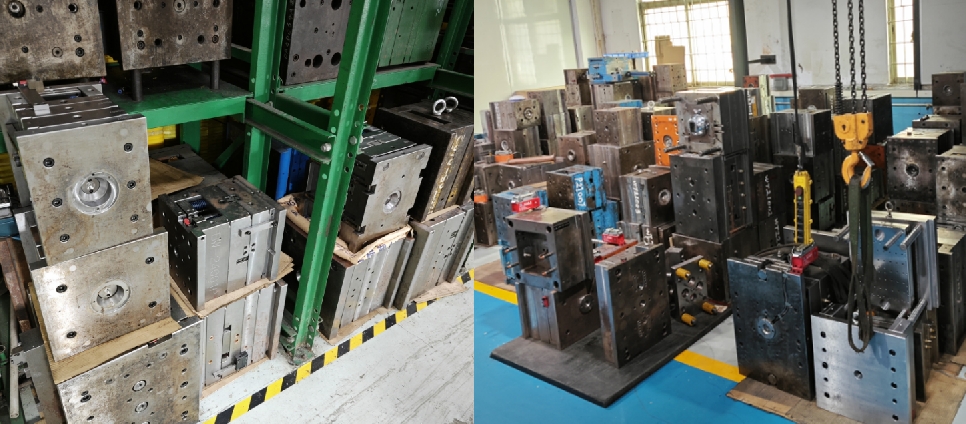Transfer molding is another widely used molding process in the manufacturing industry, aside from compression and injection molding. This technique combines the principles of injection and compression molding and allows for the embedding of pre-made components into the molding material. Transfer molding offers several advantages, including higher tolerances, shorter production cycles, and greater design flexibility for parts.
Below, I will explain in detail the principles of transfer molding technology, its advantages and disadvantages, and its applications, as well as compare it with other molding techniques.
What is Transfer Molding?
Transfer molding is a manufacturing process used to produce thermosetting plastic and rubber parts. Unlike compression molding and injection molding, transfer molding involves transferring pre-measured and heated resin into a closed mold cavity. This method enables the production of high-quality rubber or plastic components, including connectors, conduits, seals, and engine components, among others.
Working Principle of Transfer Molding
The working principle of transfer molding is quite simple. Before entering the mold, pre-measured raw material is placed into the upper container of a heated transfer pot. By applying pressure, a plunger is used to introduce the heated and softened material from the transfer pot into the mold cavity. The material continues to be heated and solidifies or cures under pressure within the mold cavity. Once the material is fully solidified, the mold is opened, and the molded part or product is ejected from the mold cavity using ejector pins.
The following figure shows the basic process of transfer molding:

Common Resins for Transfer Molding
The thermosetting resins commonly used in transfer molding include:
Silicone Resins
Silicone resins come in various forms, including fluid, elastomer, and rigid types. They all exhibit excellent flexibility, heat resistance, biocompatibility, weather resistance, and electrical insulation properties. They are commonly used in applications requiring high temperature and corrosion resistance, such as seals, gaskets, electrical insulation components, and more. However, silicone resins tend to be more expensive compared to other materials.
Epoxy Resin
Epoxy resin is a multifunctional thermosetting polymer with excellent mechanical properties, chemical resistance, electrical insulation, high chemical resistance, low adhesion, heat resistance, and chemical corrosion resistance. It is widely used in the manufacture of complex parts, electronic encapsulation, composite materials, and adhesives. However, epoxy resin has a certain brittleness, and post-curing treatment is required to obtain the best mechanical strength.
Phenolic Resin
Phenolic resin is formed by the reaction of phenol and formaldehyde. They have good heat resistance, flame retardancy, electrical insulation, and mechanical strength. Commonly used for manufacturing electrical insulation components, gears, handles, and as coating materials for wear resistance, heat resistance, and insulation.
Melamine Resin
Melamine resin, also known as melamine-formaldehyde resin, is a type of thermosetting plastic produced through a condensation reaction between melamine (1,3,5-triazine-2,4,6-triamine) and formaldehyde in the presence of a catalyst. It is characterized by its excellent durability, abrasion resistance, high surface hardness, and non-flammability. Melamine resin is widely used in the manufacture of melamine tableware due to its non-toxicity, odorlessness, ease of cleaning, and resistance to breakage.
Polyester Resin
Polyester resin is a type of thermosetting resin formed through esterification or ester exchange reactions between polyester and crosslinking agents, typically polyols or polyacids. They exhibit excellent durability, including impact resistance and abrasion resistance. Polyester resin can be combined with various additives, fillers, and reinforcing materials such as fiberglass, carbon fiber, minerals, etc., to meet specific application requirements.
Polymers and Polyurethane
Polyurethane is a polymer compound synthesized through a polymerization reaction between isocyanates and polyols. It exhibits a range of excellent properties, including good durability, high strength, outstanding elasticity, and excellent load-bearing capacity. Therefore, in automotive manufacturing, polyurethane can be used to manufacture components such as seats, steering wheels, dashboards, etc.
Polyester, on the other hand, is synthesized through a condensation reaction between a dicarboxylic acid and a diol. It possesses high mechanical strength, good heat resistance, and excellent durability. It is an ideal material for manufacturing electronic components, electrical parts, and certain structural components.

Advantages and Disadvantages of Transfer Molding
When making decisions regarding manufacturing processes, it is crucial to understand the advantages and disadvantages of transfer molding. This helps you make more informed decisions to minimize injection molding costs and ensure product quality.
| Advantages | Disadvantages |
|---|---|
| Inject resin into a closed mold using a plunger and higher compression pressure to ensure even distribution of material in the mold, capable of producing high-precision and complex shaped parts. | Materials in the transfer pot, walls, and sprue cannot be reused, resulting in waste of approximately 20% to 40% of the plastic material. |
| Metal or other components (inserts) can be placed into molds to form integrated components. | Transfer molding typically involves the design of complex transfer pots and plunger systems, leading to higher tooling and equipment costs. |
| Can produce finished parts with smooth surfaces, reducing the need for subsequent processing and finishing. | During the transfer process, trapped air in the mold needs additional measures to ensure proper evacuation, or else it may result in defects in the final product. |
| Greater design flexibility, allowing for complex designs and sharp edges. | Slower production speeds. Transfer molding involves additional material preparation and transfer steps. |
| Using closed mold design to reduce excess material (i.e. flash) escaping between mold components during the machining process. | / |
Applications of Transfer Molding
Transfer molding finds application in various industries due to its ability to produce high-quality parts with complex geometries. Some common applications include:
| Industry | Product Application |
|---|---|
| Automotive Industry | Door handles, sealing strips, dashboard, gaskets, vibration isolators, engine cylinder heads, brake discs, spark plug wires, wheel bearings, etc. |
| Electronic Components | Spark plug wires, wires, cable components, connector housing, socket base, electronic component packaging, switch box, circuit breaker housing, sensors and instruments, insulation gaskets, motor end caps, etc. |
| Aerospace Industry | Aircraft electrical connectors, wire insulation layers, isolation pieces, seat backboards, instrument panels, wall panels, aircraft lighting systems, engine components, pipeline connections, cushioning pads, axle insulation sleeves, air duct connections, etc. |
| Consumer Goods | Toy shell, buttons, remote control handle, power switch, battery cover, heat sink, moving parts, electronic device screen border, headphone plug, etc. |
| Medical Devices | Syringes, catheters, artificial joint casings, dental implants, orthopedic internal fixators, surgical instrument handles, oxygen masks, sensor casings, medical equipment casings, etc. |
| Industrial Equipment | Industrial mechanical seals, grommets, gaskets, gaskets, oil pipe joints, valve seats, bearing covers O-ring seals, pneumatic pistons, etc. |
| Natural Gas Industry | Pressure regulator components, valve components, pipeline connections, natural gas filters, metal rubber surface seals, brackets, hangers, etc. |
| Rubber Products | Valve sealing gasket O-ring seals, valve interface seals, rubber gaskets, metal rubber composite seals, rubber shock absorbers, etc. |
Comparison With Other Molding Techniques
Compared to injection molding and compression molding, transfer molding offers its unique advantages. For example, compression molding is suitable for producing simple-shaped parts, but it has a longer production cycle, rapid mold wear, high labor intensity, and difficulty in forming complex-shaped parts. In contrast, transfer molding utilizes closed mold designs and is capable of producing complex parts.
Table: Compression vs Injection Molding vs Transfer Molding Difference Between
| Difference | Compression | Injection Molding | Transfer Molding |
|---|---|---|---|
| Process | The material is directly placed inside the mold cavity, and pressure is applied to the entire mold to form the material. | Directly heat and plasticize the material in the injection machine before injecting it into the mold. | The material is first heated and pressurized in the container to a plasticized state, and then pushed into the closed mold cavity through the gate. |
| Characteristic | Suitable for producing plastic products with simple shapes and uniform wall thickness. | Very suitable for producing large thin-walled parts, especially for high-volume production that requires high precision and consistency. | Suitable for producing plastic products with complex shapes and large wall thickness variations. |
| Productivity and Accuracy | Good | Very high | High |
| Tool Complexity | Relatively simple | Complex | Moderately complex |
| Mold Cost | Low cost | High cost | Moderate cost |
At BOYI, our injection molding services can fully meet your special needs. BOYI uniqueness lies in having an experienced team of engineers who always prioritize customer satisfaction. From designing customized molds to final production, we accompany customers throughout the entire process and provide excellent support and guidance in every critical step.
Contact us now and let’s explore together how plastic molding services can bring unparalleled value to your next project.
Let’s Start A New Project Today
Conclusion
In summary, transfer molding technology is an important molding technology that plays a crucial role in multiple industries. Through the introduction in this article, we have gained a more comprehensive understanding of transfer molding technology. If you have any other questions about transfer molding or are looking for professional partners, please contact BOYI expert team.
FAQ
Transfer molding differs from injection molding in terms of material processing and molding process. Transfer molding involves heating and plasticizing the material before injecting it into the mold, while injection molding directly heats and plasticizes granular or powdered material in an injection machine before injecting it into the mold.
Transfer molding is suitable for producing plastic products with simple shapes, less demanding precision requirements, and relatively small volumes, such as housings and covers. It is also suitable for products requiring special materials or specific molding conditions.
The limitations of transfer molding include relatively low production efficiency, potentially lower precision compared to injection molding, and higher requirements for mold design and materials. Furthermore, pre-heating and plasticizing the material may require a longer production cycle.
Catalog: Injection Molding Guide

This article was written by engineers from the BOYI team. Fuquan Chen is a professional engineer and technical expert with 20 years of experience in rapid prototyping, mold manufacturing, and plastic injection molding.




